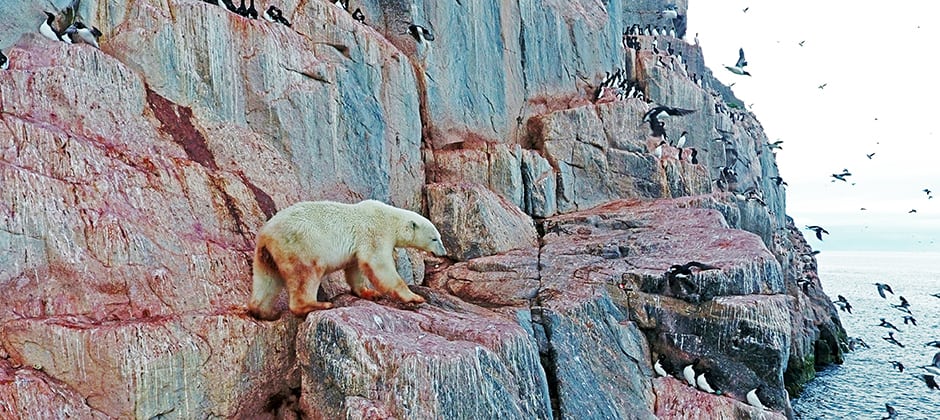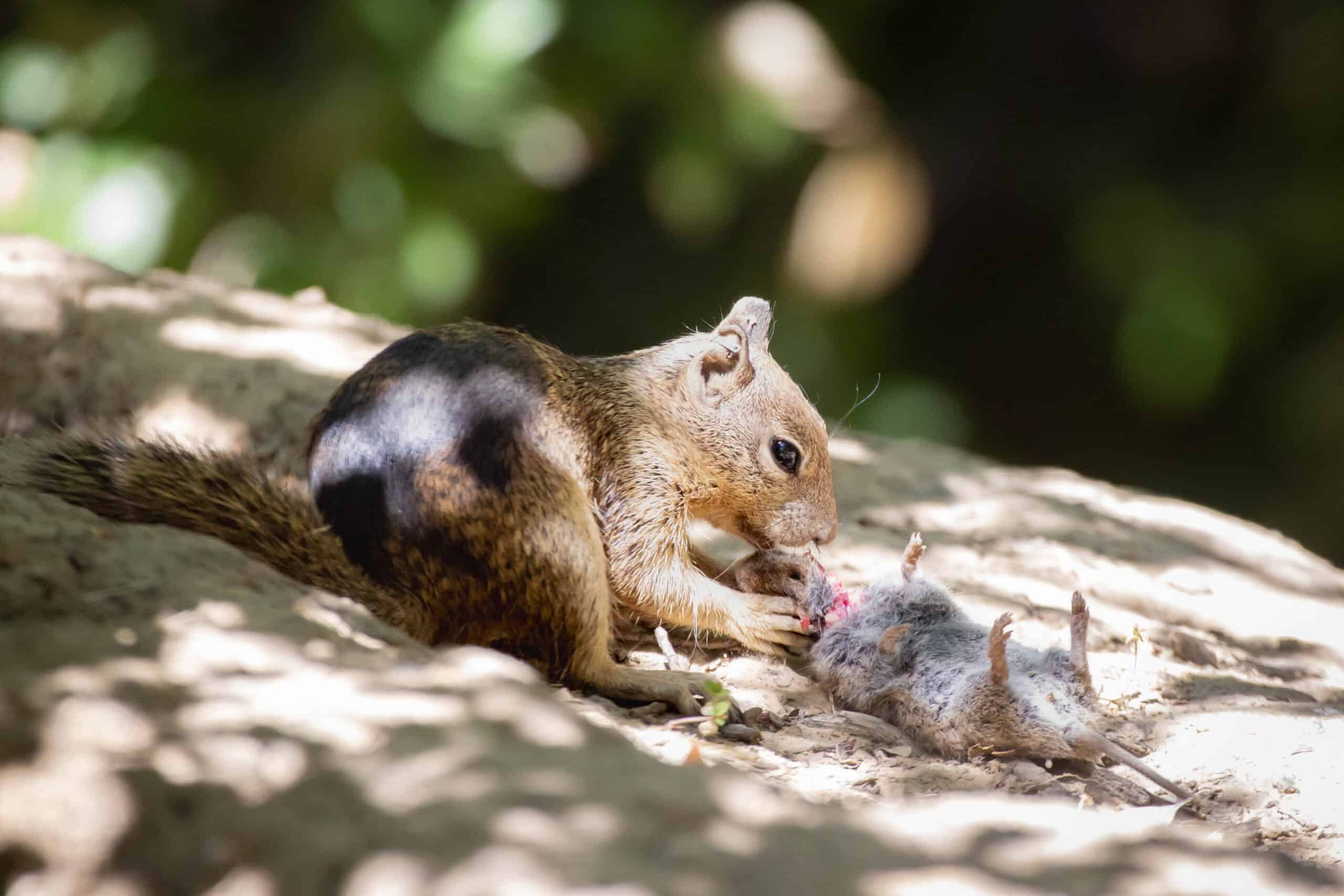Share this article
Watch: Murres dive deep on fishing missions
Rappelling down a 650-foot cliff to catch seabirds on a remote island just below the Arctic Circle was scary enough.
“The first time you look over and you rappel over, it’s certainly not for the faint of heart,” said Kyle Elliott, a research chair in Arctic ecology at McGill University in Canada.
But for Elliott and fellow researcher Emile Brisson Curadeau, it was the hungry polar bears (Ursus maritimus) — usually one a day walking near their cabin — that raised real concerns, and devoured their research subjects.
Their team had come to Coats Island, several hours by Twin Otter turboprop from Iqaluit, Nunavut, arriving mid-June to still freezing temperatures, to study thick-billed murres (Uria lomvia). Their two colonies on the Hudson Bay island make up part of a larger subpopulation found across the North Atlantic and Arctic oceans.
“We wanted to survey these arctic birds because not much is known about Arctic ecosystems,” Elliott said.
The team was capturing murres in order to attach accelerometers and video cameras to their backs and tail feathers. They hoped the technology would give them a bird’s-eye view of the way murres hunt at sea.
Often with wingspans of more than 2 feet, the murres flew around the researchers as they hung over the side of the cliffs.
“It’s a bit different than the office,” Elliott said.
The birds are generalists, making the most of what they can find in the sea around the cliffs they nest on in the summer. Previous research had already confirmed what they ate from checking what they brought back in their bills for their chicks and through stable isotope analysis.
This team had been equipping the birds with accelerometers to see how fast they moved while diving as deep as 500 feet underwater to catch food. But while these devices told them the birds used bursts of speed while hunting, the researchers couldn’t tell exactly what speeds were necessary for which prey.
“It’s difficult to associate the differences in diet with the different foraging behaviors observed,” said Brisson Curadeau, who was completing his master’s studies at McGill at the time.
They decided to add cameras along with the accelerometers. They rappelled over cliffs to capture the birds, equip them with the devices and wait — sometimes for as long as 12 hours — for the birds to fly back with their equipment.
The videos they got back showed that the birds’ fastest swimming coincided with their attempts to catch capelin (Mallotus villosus). Slower speeds were usually related to capturing shrimp. Murres caught most of their prey while diving down, they found, contradicting previous assumptions that they captured their prey on the way back to the surface. And rather than focus on large schools of fish or shrimp, murres dove in search of single prey items.
“It’s kind of blown us away,” Elliott said. “That really changed the ways we think about things.”
Now that they have matched accelerometer data with visual confirmation on the cameras, he said, they can more easily track the types of fish and shrimp that murres eat at different times of the year. This kind of information is important, he said, since murres can be used to track the overall health of their surrounding ecosystem.
Capturing murres from the side of a cliff may not be easy, Elliott said, but it’s easier (and much cheaper) to check bird bills than to get an icebreaker to survey fish populations in an icy sea.
Header Image:
A polar bear feeds on murres and their nests on the cliffs of Coats Island in Hudson Bay.
©Emile Brisson Curadeau








